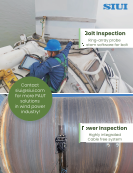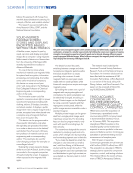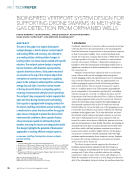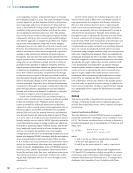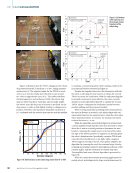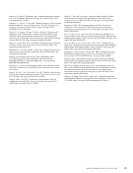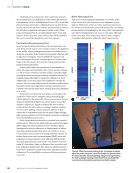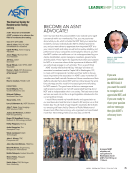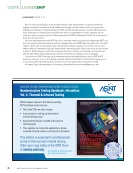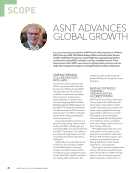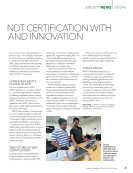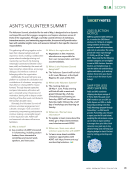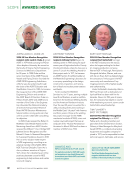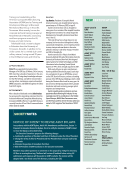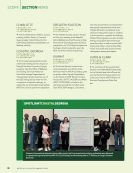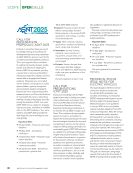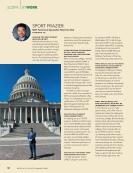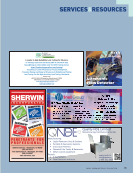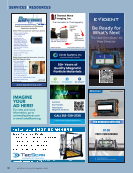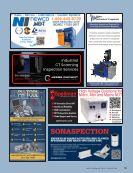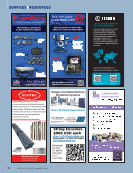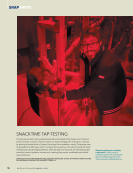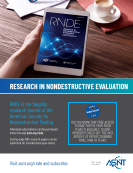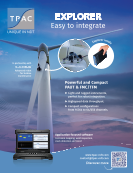times, estimated the source location, and averaged the error in
distance over these 100 trials. This approach provides a solid
foundation for understanding the expected error range when
the agent has data from only three locations. The same meth-
odology was applied for scenarios with six, eight, and ten
randomly chosen locations. Figure 6 illustrates the expected
error an agent might encounter when starting from differ-
ent grid points and selecting subsequent points at random.
The expected error is significantly higher in some cases,
primarily due to the agent’s potential vertical movement,
which increases the error. Although the expected error range
becomes narrower when the number of points is increased
to 10, the robot still expects a 120 mm to 140 mm error in
distance.
An alternative approach involves providing the agent
with additional information to enable more strategic
motion planning. This additional information is obtained
by rotating the microphone about the Z-axis. Figure 7 illus-
trates how the TDOA and amplitude change as the micro-
phones rotate. As expected, the TDOA reaches zero when
the robot is oriented directly toward the sound source
(leakage). While one may expect to receive the maximum
amplitude once the microphones are directed toward the
leakage source, our analysis shows that the maximum
amplitude slightly deviated from that direction, as depicted
in Figure 7b. Consequently, starting from an initial position,
the robot can rotate about the Z-axis to accurately deter-
mine the direction of the sound source (leakage) when the
TDOA reaches zero. Once the direction is established, and
knowing that horizontal movement is more effective, the
robot can then move laterally to capture a second TDOA
reading and localize the sound location. This movement
strategy is tested using our robotic dog platform to replicate
more realistic scenarios.
ME
|
LEAKLOCALIZATION
1 0.25
0.2
0.15
0.1
0.05
2
3
4
5
6
7
8
–600
–800
–1000
–1200
–1400
X (mm)
–1600
–1800
–2000
–250 –200 –150 –100 –50 0 50 100
–600
–800
–1000
–1200
–1400
X (mm)
–1600
–1800
–2000
–250 –200 –150 –100 –50 0 50 100
8 7 6 5
X
4 3 2 1
1
0.2
0.3
0.4
0.5
0.6
0.1
2
3
4
5
6
7
8
8 7 6 5
X
4 3 2 1
19.722
5
– 14.5775
14.5775
14.5–
77 5
– 14.5775
–
19.7225 19.7225
– 19.722
5
– 19.722
5 19.722 5
– 19.722
5
–
5
–
5
–
5
5
–19.722518.007
Leakage Leakage
Figure 5. Distribution of error in the grid with the first location at (a) Point 1 and (b) Point 29. Intersection of hyperbolas constituted from points (c)
1 and 2, and (d) 1 and 9.
0.18
0.17
0.16
0.15
0.14
0.13
0.12
0.11
0.1
0.09 0 10 20 30 40 50 60 70
Location index
3 random points
6 random points
8 random points
10 random points
Figure 6. Expected error when the first position is fixed, and
subsequent points are chosen randomly.
56
M AT E R I A L S E V A L U AT I O N • A P R I L 2 0 2 5
Y
(mm)
Y
(mm)
Y Y
Expected
error
(m)
Error
(m)
Error
(m)
distance over these 100 trials. This approach provides a solid
foundation for understanding the expected error range when
the agent has data from only three locations. The same meth-
odology was applied for scenarios with six, eight, and ten
randomly chosen locations. Figure 6 illustrates the expected
error an agent might encounter when starting from differ-
ent grid points and selecting subsequent points at random.
The expected error is significantly higher in some cases,
primarily due to the agent’s potential vertical movement,
which increases the error. Although the expected error range
becomes narrower when the number of points is increased
to 10, the robot still expects a 120 mm to 140 mm error in
distance.
An alternative approach involves providing the agent
with additional information to enable more strategic
motion planning. This additional information is obtained
by rotating the microphone about the Z-axis. Figure 7 illus-
trates how the TDOA and amplitude change as the micro-
phones rotate. As expected, the TDOA reaches zero when
the robot is oriented directly toward the sound source
(leakage). While one may expect to receive the maximum
amplitude once the microphones are directed toward the
leakage source, our analysis shows that the maximum
amplitude slightly deviated from that direction, as depicted
in Figure 7b. Consequently, starting from an initial position,
the robot can rotate about the Z-axis to accurately deter-
mine the direction of the sound source (leakage) when the
TDOA reaches zero. Once the direction is established, and
knowing that horizontal movement is more effective, the
robot can then move laterally to capture a second TDOA
reading and localize the sound location. This movement
strategy is tested using our robotic dog platform to replicate
more realistic scenarios.
ME
|
LEAKLOCALIZATION
1 0.25
0.2
0.15
0.1
0.05
2
3
4
5
6
7
8
–600
–800
–1000
–1200
–1400
X (mm)
–1600
–1800
–2000
–250 –200 –150 –100 –50 0 50 100
–600
–800
–1000
–1200
–1400
X (mm)
–1600
–1800
–2000
–250 –200 –150 –100 –50 0 50 100
8 7 6 5
X
4 3 2 1
1
0.2
0.3
0.4
0.5
0.6
0.1
2
3
4
5
6
7
8
8 7 6 5
X
4 3 2 1
19.722
5
– 14.5775
14.5775
14.5–
77 5
– 14.5775
–
19.7225 19.7225
– 19.722
5
– 19.722
5 19.722 5
– 19.722
5
–
5
–
5
–
5
5
–19.722518.007
Leakage Leakage
Figure 5. Distribution of error in the grid with the first location at (a) Point 1 and (b) Point 29. Intersection of hyperbolas constituted from points (c)
1 and 2, and (d) 1 and 9.
0.18
0.17
0.16
0.15
0.14
0.13
0.12
0.11
0.1
0.09 0 10 20 30 40 50 60 70
Location index
3 random points
6 random points
8 random points
10 random points
Figure 6. Expected error when the first position is fixed, and
subsequent points are chosen randomly.
56
M AT E R I A L S E V A L U AT I O N • A P R I L 2 0 2 5
Y
(mm)
Y
(mm)
Y Y
Expected
error
(m)
Error
(m)
Error
(m)





